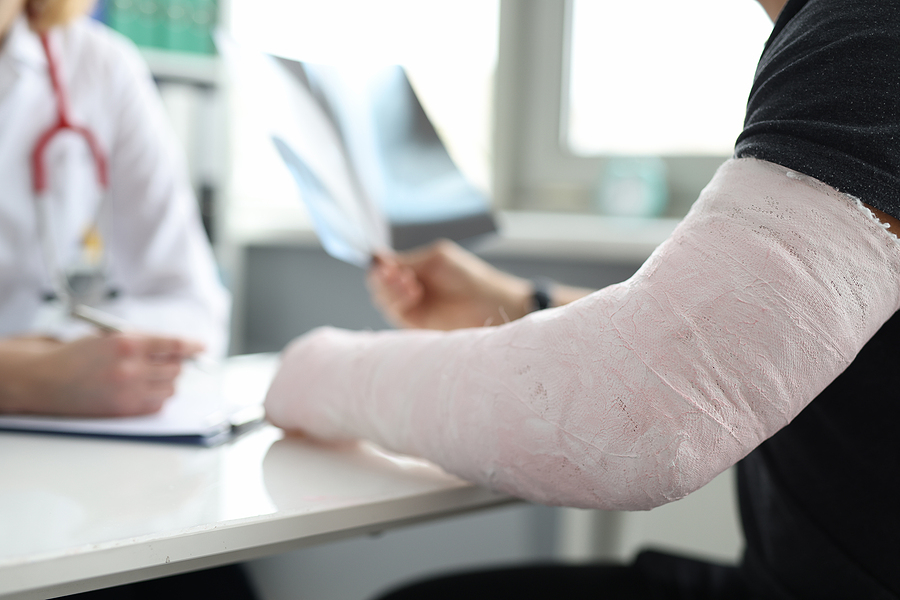
Image Source: Google
Getting involved in an accident and sustaining injuries can be a traumatic experience. Apart from dealing with the physical and emotional aftermath, you may also face financial burdens due to medical bills, lost wages, and other expenses. In such situations, filing a personal injury claim can help you seek compensation for your losses and hold the responsible party accountable for their actions. If you need more information about sugaring leg wax, you may visit Accident Medical Group.
However, the process of filing a personal injury claim can be complex and overwhelming. From the initial recovery phase to reaching a settlement, here is a breakdown of the journey you may undergo when pursuing a personal injury claim.
1. Initial Recovery and Medical Treatment
After sustaining injuries in an accident, your primary focus should be on your recovery and getting the necessary medical treatment. Your health and well-being should always take precedence. Here are some key points to consider during the initial recovery phase:
Key Points:
- Seek immediate medical attention for your injuries.
- Follow your healthcare provider's treatment plan and attend all appointments.
- Document all medical expenses, including bills, prescriptions, and therapy costs.
- Keep detailed records of your symptoms, progress, and any limitations caused by the injuries.
2. Consultation with a Personal Injury Attorney
Once you are on the path to recovery and your condition has stabilized, it is advisable to seek legal advice from a reputable personal injury attorney. An experienced attorney can guide you through the process of filing a personal injury claim and help protect your rights. Here are some steps involved in the consultation process:
Steps:
- Schedule a consultation with a personal injury attorney to discuss your case.
- Presentation of medical records, accident reports, and other relevant documentation.
- Discussion of potential legal options and strategies for pursuing compensation.
- Evaluation of the strength of your case and the potential value of your claim.
3. Filing the Personal Injury Claim
After consulting with your attorney and deciding to move forward with a personal injury claim, the next step involves filing the necessary paperwork and initiating the legal process. The formal filing of a personal injury claim is a crucial step in seeking compensation for your injuries and losses. Here are some key aspects to consider during this stage:
Key Aspects:
- Preparation and filing of the complaint or petition with the appropriate court.
- Serving the complaint on the defendant(s) and other parties involved in the case.
- Engagement in the discovery process to gather and exchange evidence with the opposing party.
- Negotiation of a settlement or preparation for trial if a settlement cannot be reached.
4. Negotiation and Settlement Discussions
Many personal injury claims are resolved through negotiation and settlement discussions between the parties involved. A fair settlement can help you avoid the time, expense, and uncertainty of a trial. Here are some important considerations when engaging in negotiation and settlement discussions:
Considerations:
- Evaluation of the initial settlement offer and negotiation of a fair compensation amount.
- Review of the terms and conditions of the settlement agreement, including release of claims.
- Consultation with your attorney on the adequacy of the settlement offer and potential next steps.
- Presentation of counteroffers and continued negotiation to reach a mutually acceptable settlement.
5. Acceptance of Settlement and Closure of the Claim
Upon reaching a settlement agreement that adequately compensates you for your injuries and losses, the final step involves accepting the settlement and closing your personal injury claim. This phase marks the resolution of your legal case and provides the closure needed to move forward with your life. Here are some key points to consider during the acceptance of the settlement:
Key Points:
- Review of the settlement agreement and its terms with your attorney.
- Signing of the settlement agreement and release of claims against the defendant(s).
- Disbursement of settlement funds and payment of outstanding legal fees and expenses.
- Closure of the personal injury claim and acknowledgement of the settlement as final resolution.
Overall, the journey of filing a personal injury claim can be challenging and complex. However, with the right support, guidance, and legal representation, you can navigate this process successfully and secure the compensation you deserve for your injuries and losses. Remember to prioritize your health and well-being throughout the journey and seek assistance from experienced professionals to help you achieve a favorable outcome in your personal injury claim.